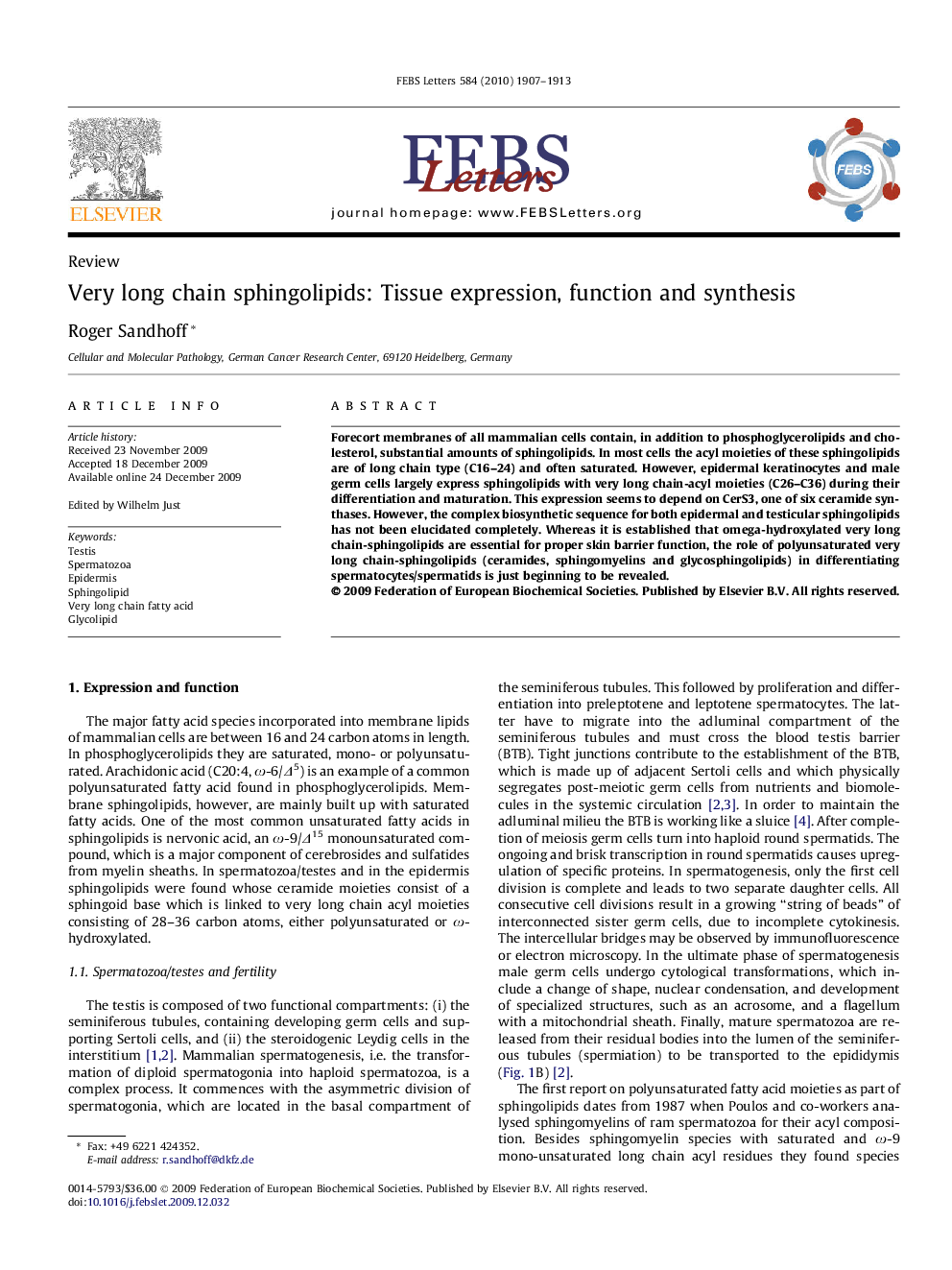| Article ID | Journal | Published Year | Pages | File Type |
|---|---|---|---|---|
| 2049318 | FEBS Letters | 2010 | 7 Pages |
Forecort membranes of all mammalian cells contain, in addition to phosphoglycerolipids and cholesterol, substantial amounts of sphingolipids. In most cells the acyl moieties of these sphingolipids are of long chain type (C16–24) and often saturated. However, epidermal keratinocytes and male germ cells largely express sphingolipids with very long chain-acyl moieties (C26–C36) during their differentiation and maturation. This expression seems to depend on CerS3, one of six ceramide synthases. However, the complex biosynthetic sequence for both epidermal and testicular sphingolipids has not been elucidated completely. Whereas it is established that omega-hydroxylated very long chain-sphingolipids are essential for proper skin barrier function, the role of polyunsaturated very long chain-sphingolipids (ceramides, sphingomyelins and glycosphingolipids) in differentiating spermatocytes/spermatids is just beginning to be revealed.
